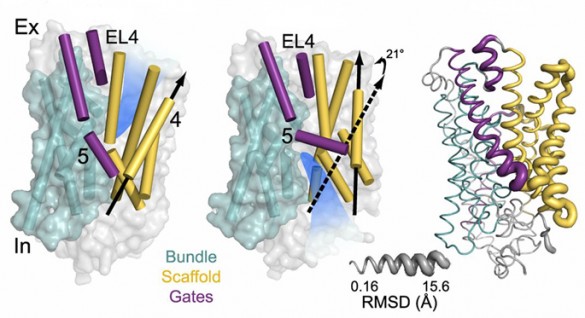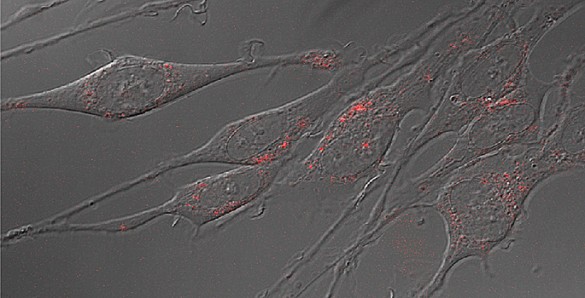Neurotransmitter transporters – proteins that “clear” neurotransmitter from the synapse and terminate nerve signaling – are targets of antidepressant medicines and drugs of abuse. The bacterial leucine transporter (LeuT), which is structurally and functionally similar to neurotransmitter/sodium transporters, has emerged as a model for investigating the transport mechanism of these proteins. However, current mechanistic models are based on static crystal structures of wild-type and mutant forms of LeuT.
Now, Hassane Mchaourab, Ph.D., and colleagues have used spectroscopic tools to make dynamic measurements in LeuT, in order to elucidate sodium- and leucine-dependent conformational changes in the transporter. The results identify the structural motifs that underlie the shift of LeuT between its various states – outward-facing, inward-facing and occluded. The conformational changes differ from the existing models based on crystal structures of LeuT.
The new dynamic picture of LeuT transport, reported in Nature Structural & Molecular Biology, is an important step forward in understanding the transport mechanism of molecules that are critical in neuropsychiatric and addiction disorders.
The team of collaborators included Jonathan Javitch, M.D., Ph.D., at Columbia University, Harel Weinstein, D.Sc., at Weill Cornell Medical College and Benoit Roux, Ph.D., at the University of Chicago. This research was supported by National Institutes of Health grants GM087519, DA022414 and DA012408.
Send suggestions for articles to highlight in Aliquots and any other feedback about the column to aliquots@vanderbilt.edu















